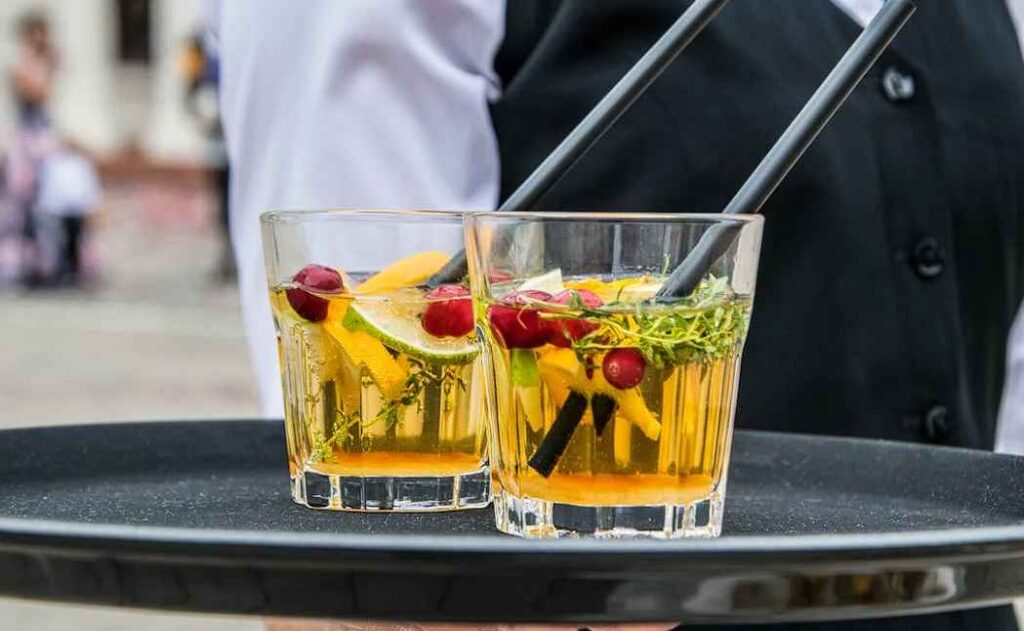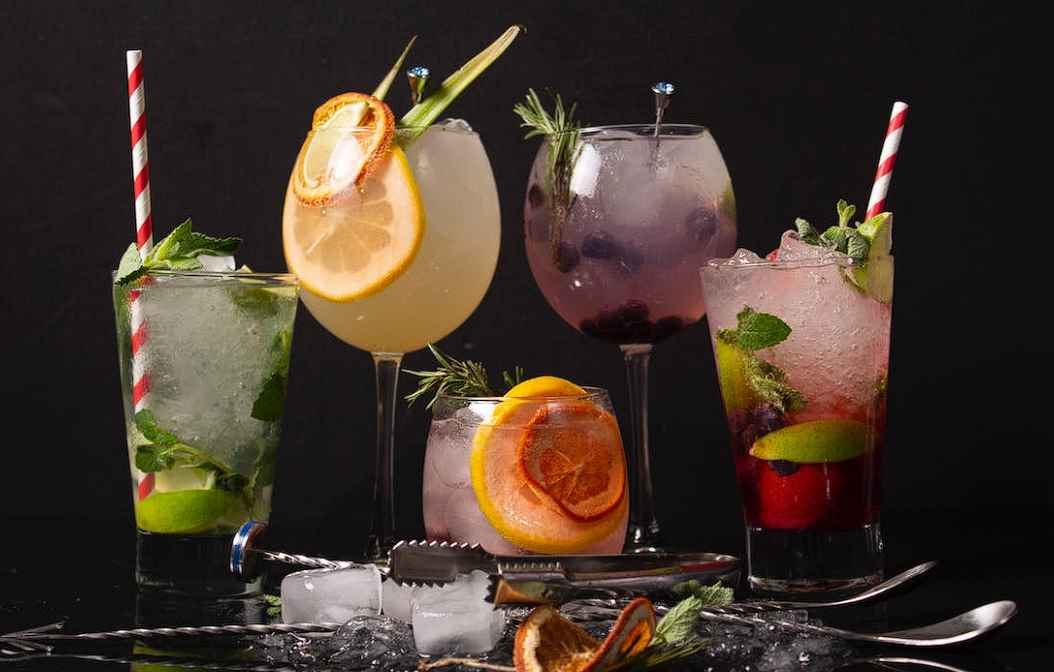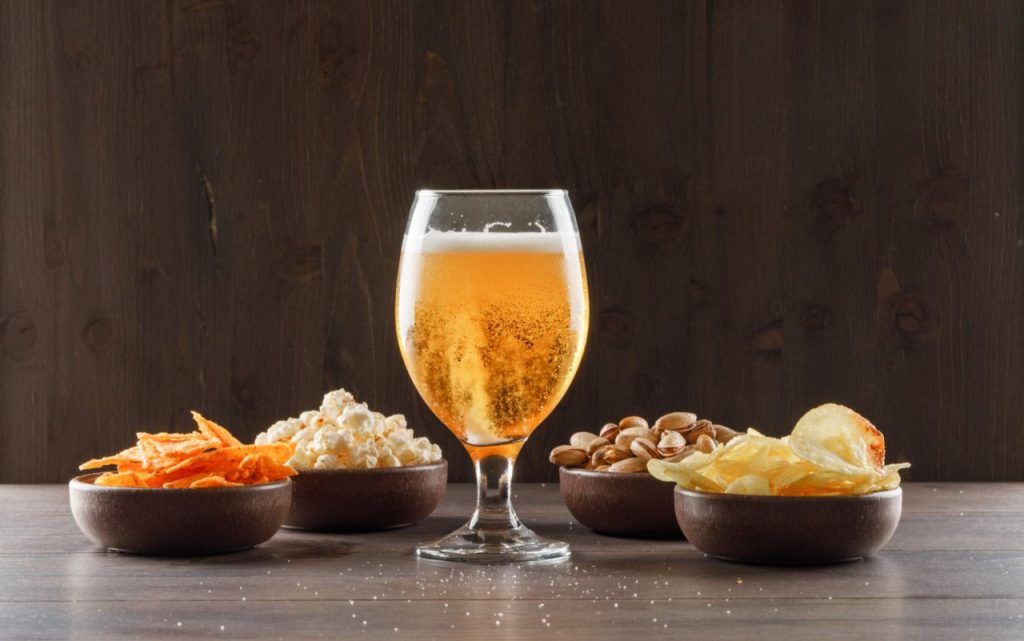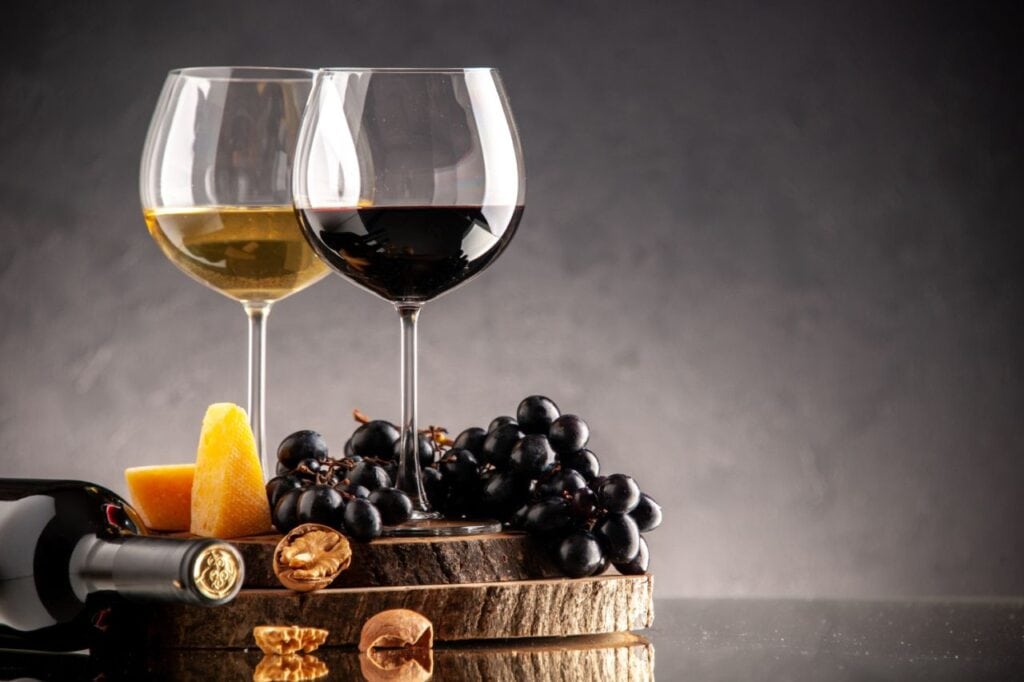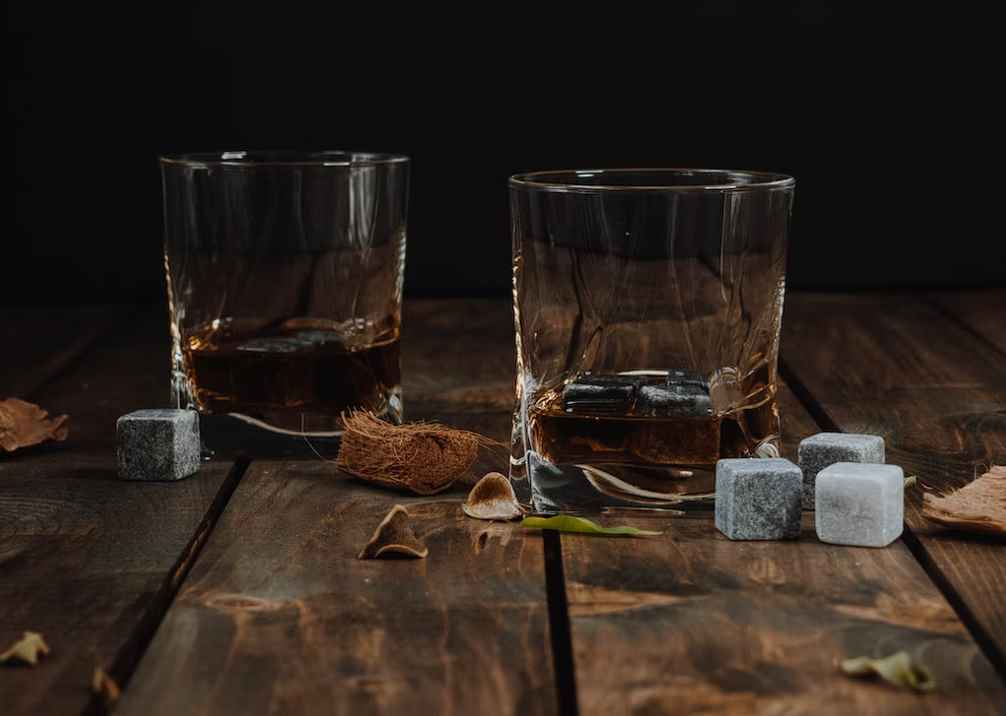Are you looking for a way to spice up your cocktail game? Then, consider making homemade gin syrups! This is an incredibly easy and fun way to add flavour, texture, and depth to any drink.
Whether you are a beginner or an experienced mixologist, this simple technique will provide new and exciting options for creating flavorful drinks at home. With just a few basic ingredients such as simple syrup, fresh fruit juice, herbs, spices and one key ingredient – gin - you can make some truly delicious cocktails that are perfect for any occasion.
Read on to learn more about the DIY Gin Syrup creation process so that you can start experimenting with infusions in no time!
Let's get started!
Enrich your taste journey today by coming down for an unforgettable tasting experience at Tar Barrel Mornington Brewery & Distillery!
Technique
First, you have to become familiar with the process of creating a syrup. Simple syrup is true to its reputation as being user-friendly and straightforward. The majority of recipes, including the French 75, the Tom Collins, the Bramble, and a great number of others, ask for a simple syrup, which has a ratio of one part sugar to one part water. This is how the method works:
Simple Sugar Syrup Recipe
- 100g water
- 100ml caster sugar
- Fruits or flavourings of your choice
- Take a glass and load it with caster sugar until it measures 100 millilitres.
- Put this into a coffee mug or a jam jar.
- Take an accurate measurement of 100 ml of water.
- Include this in the sugar mixture.
- First, give it a stir, then wait a moment before giving it another.
- After 10 to 15 minutes, the sugar ought to have totally dissolved by this point. This is just some plain old syrup (also known as sugar syrup).
- Because there are no organic preservatives in homemade syrup, it must be stored in the refrigerator for one to two weeks after it has been bottled.
- Optional: if you want a syrup that is sweeter and less watered down, you could double the amount of sugar you use in comparison to the amount of water you use (for example, 200 millilitres of sugar to 100 millilitres of water) and mix the two ingredients while heating them until the sugar dissolves. However, this step is not required because any recipe that calls for simple syrup (or sugar syrup) is talking about the recipe with a ratio of 1:1. It is important to note that in order to separate the aromas from flavoured syrups, you will be required to heat the combination.
The Flavours
The use of flavoured syrups is the next step. In most cases, they are cooked in a closed pan over low heat with a ratio of sugar to water that is equal to one-to-one; the heat is essential for extracting the flavours. The other components determine the amount of time needed. Making tea syrup can be accomplished in a matter of minutes at most. There are an overwhelming number of alternatives, ranging from traditional drinks to those made with fruit. These are all wonderful ingredients for making syrups.
Making fruit syrups is just as simple as making tea syrups, though it takes a little bit more time. To make pomegranate syrup, which is the authentic version of grenadine, combine the seeds of one large pomegranate with 500 millilitres of water and an equal amount of sugar. Simmer with the lid on for twenty to thirty minutes on low heat. Then, put it to the side so it can cool. After that, bottle it up.
Gingerbread
A portion of gingerbread syrup can be used to make both flavorful and stimulating drinks. It is quite simple to produce on your own at home. First, finely slice some ginger (the amount needed depends on the quantity created and the flavour that is wanted), then combine the ginger with about 200 grammes of sugar (use a 2:1 sugar to water ratio to amend the quantity). After allowing it to sit in the container for one more night to form a paste, add one hundred millilitres of hot water to the mixture in order to melt the residual sugar.
To remove the aroma of the ginger, you can either leave it for a few hours or up to a day, depending on how strong of a ginger taste you want. After that, use a strainer or a tiny sieve to perform a second round of straining, after which you may bottle the liquid and store it in the refrigerator for up to two weeks. In the initial step of preparing your syrup, add one or two fresh lemon slices or a few pinches of dried chilli flakes for a syrup with a higher level of heat.
Cinnamon
Enjoy a delicious seasonal beverage that is produced with homemade cinnamon syrup and is ideal for the colder months of the year. Have yourself a Spiced Apple Collins and relax. To produce your own, all you need to do is add one or two cinnamon sticks to the base we described above, then cook the mix on low until you can sense the cinnamon wafting off of it. After the mixture has cooled, you may want to enhance the flavour by adding a single drop of vanilla extract, although doing so is not required.
Strawberry and basil
Do you have an interest in creating your very own wonderfully pink gin for the summer? Strawberry and basil are two ingredients that we suggest using to make the ideal gin syrup to keep on hand during the warmer months. Use a substantial amount of fresh fruit, and add the basil leaves just before the syrup infusion is complete. If you add the basil leaves early in the procedure, their volatile scents and flavours will be harder to perceive in the finished product.
Rosemary
Although many people might identify fresh herbs with savoury recipes, the truth is that they bring a great level of freshness and richness to sweeter dishes. Take, for instance, this rosemary syrup as an illustration: make your syrup according to the instructions given above, then toss in a small handful of rosemary sprigs and allow them to steep for at least 20 minutes before filtering and packaging. Then, use it in various servings to conjure up images of lazy afternoons spent in the garden throughout the summer.
Nectarine or peach
It is during the height of summer that stone fruits reach their full potential, and now is the ideal time of year to create your very own nectarine gin syrup because of this. You can use one or two nectarines on their own, or you can combine them with yellow and white peaches to achieve a more complex flavour. If you want your dish to have a more complex flavour, you can add a short spice infusion. Some examples of this include cinnamon sticks and star anise.
Lavender
Add 20 grammes of fresh or dried lavender to your mixture for simple syrup. Then, let the mixture sit out at room temperature for 12 hours before filtering it twice through a fine sieve or a clean dish cloth.
You can use it in a Lavender Bramble or a Gin and Tonic.
Tea
Just follow the directions for making simple syrup, constantly whisking until the sugar is completely dissolved, to make a homemade tea syrup that is ideal for the Gin Tea recipe. The next step is to bring the mix to a simmer, at which point you should add a couple of tea bags and remove it from the heat to allow it to cool. After around ten minutes, remove the tea bags to reveal a gin-flavoured syrup that is not only easy to make but also quite delicious.
Raspberry
The summertime is the perfect time to enjoy the rich and fragrant flavour of raspberry syrup. Pick up a big punnet of the perfectly ripe and fragrant berries you can get your hands on, and wash them thoroughly before putting them in the syrup. Follow the instructions given above to create the syrup, and then allow the raspberries to sit in it so that it may absorb their full, fruity flavour. Utilise it in a variety of beverages, or even blend it with a bottle of London Dry Gin to create your own aroma of gin that is unique to your tastes by using this ingredient.
Cocktails To Try
Tom Collins
Who exactly is this Tom Collins, and what is the significance of the beverage bearing his name? The truth of the matter is that there is no such thing as a Tom Collins. However, there was an ongoing joke that most likely served as the inspiration for the name of this alcoholic beverage. Bar clients would stroll into a bar only to be met with a notice that Tom Collins had a beef with them, so the narrative continues.
Tom Collins had a bone to pick. Those who are very prone to believing what they hear could become quite enraged if they were led to believe that a stranger was actively working to make their lives more difficult. But Tom Collins never showed up in order to make good on that battle because, quite simply, he wasn't there to do so in the first place. So this strange joke from the nineteenth century did not truly endure, but the beverage that was named after him certainly did.
Gin, lemon juice, simple syrup, and club soda are the four components that make up this traditional gin drink. In addition, much like other drinks made with gin, this one is an excellent method to beat the heat and feel revitalised. To make this alcoholic beverage, blend two parts of gin with one part of finely squeezed lemon juice and half a portion of simple syrup in a glass. Stir to incorporate.
After that, pack it with ice, pour it in some club soda, and give it a good stir. Then, to make it look more elegant, you may finish it with a cherry and a slice of lemon to garnish. Even Tom Collins himself would give his blessing to this.
Vesper Martini
The novel and film adaptations of "Casino Royale" both include the character Vesper Lynd, whose name was given to the cocktail that became James Bond's trademark beverage and made him famous. It's shaken, not swirled, according to tradition. In the meantime, the ice brings down the temperature of the high-octane drink while also serving to dilute it.
The character 007 himself provides the following description of it in the novel "Casino Royale": Three shots of Gordon's, one shot of vodka, and a half shot of Kina Lillet are in the glass. First, give it a vigorous shake until it reaches the consistency of ice, then add a very thin slice of lemon peel. Got it?
Although you may think of the Vesper Martini as predominantly being made with gin, it really also contains vodka, which serves to tone down some of the botanical flavours of the gin. If you are unfamiliar with gin drinks or are just looking for a cocktail with a less herbaceous flavour, then the Vesper martini might be the ideal choice for you. Despite being made with gin, vodka, and vermouth, it's still quite a stiff cocktail, but it's really refined.
First, fill a cocktail shaker with ice. Next, add 3 ounces of gin, 1 ounce of vodka, and a half ounce of Lillet Blanc or dry vermouth to the shaker. Shake well. The Vesper martini is ready to serve. The mixture should be shaken, not stirred, and then strained into a martini glass before serving. The lemon peel should be used as a garnish. If you can, avoid getting hit by the bullets.
French 75
The French 75 is an excellent choice for those in need of a spirit-based beverage that is robust and jovial at the same time. It has the alcohol level and botanical flavour of gin mixed up with the sour sweetness of lemon and the sparkling of some deliciously effervescent wine. Since it is prepared with gin and champagne, it also has the alcohol level and botanical flavour of gin. It's light and sweet, but it delivers a punch that's even better than champagne, thanks to the twist of lemon on top.
For this preparation, you will require simple syrup, which you can either purchase already prepared or easily produce at home by heating a mixture consisting of equal parts sugar and water, stirring the mixture constantly over low heat, or combining the same proportion of honey to water in a blender.
The following is the recipe for it: First, add ice to a mixing glass, then add 1 12 ounces of gin, 3/4 of an ounce of fresh lemon juice, and 3/4 of an ounce of simple syrup. Mix well. After giving it a good mix, strain the mixture into a Champagne flute, and then, of course, finish it off with some champagne. Finally, you can decorate your drink with a twist of lemon by peeling off a tiny slice of lemon peel and placing it in the drink.
Gin Fizz
Another traditional cocktail made with gin is called an ultra-classic gin and tonic. A traditional gin fizz is essentially a slightly sweeter variant of this beverage. Consider ordering this as your first foray into the realm of gin if you're hesitant to go all the way to the bitter end of the spectrum.
In this beverage version, the gin fizz is made with club soda rather than a tonic water. After that, a little bit of lemon juice and powdered sugar are added so that the effervescent bubbles of the club soda can complement the acidic sweetness of the lemon juice and sugar. As a result, this beverage is airy and fizzy, and it's simple to put together even when you're in a bit of a rush. As a result of the ease with which the formula can be increased to accommodate a larger number of guests, it is especially well-suited for social occasions at which you would prefer to devote more time catching up with friends rather than toiling away in the kitchen or in the background bar. Consuming this beverage will make you feel as though you are sipping carbonated gin lemonade.
In order to make your own gin fizz at home, add two ounces of gin, one-half of an ounce of freshly squeezed lemon juice, and one teaspoon of powdered sugar in a mixing glass filled with ice. Mix well before serving. After shaking, strain the mixture into a glass that has been previously filled with ice.
After that, top it off with about three to four ounces of club soda and decorate it with a slice of lemon. Egg whites could be called for in some older, more traditional recipes, but you certainly are not required to use them in order to make a delicious beverage with this one. Decorations such as mint, rosemary, and lime are all excellent options for a gin fizz, but there are many others.
Gin Rickey
In contrast to Tom Collins, the Gin Rickey is actually named for one of the bar's bartenders. As per Difford's Guide, the gin Rickey was invented in 1880 at a bar in Washington, D.C., after a bartender named George A. Williamson witnessed Colonel Joseph Kyle Rickey squeezing lime into his whisky and then topping the probably results combination with some soda.
Williamson was inspired to invent the drink after seeing Rickey add soda to the combination after squeezing lime into his whisky. Later, Rickey bought the bar and became a big lime importer in the United States, which may not have come as a surprise to astute watchers such as Williamson.
Although it is quite similar to the Tom Collins, a gin, Rickey is made with lime juice rather than lemon juice, and it is also presented in a glass that is much smaller than the one used for the Tom Collins. The Gin Rickey, much like other drinks made with gin, is strong but not overpowering. It has hints of citrus and botanicals, thanks to the eponymous liquor and the lime used.
How to put it together: In a mixing glass full of ice, mix 1 12 ounces of dry gin, 12 ounces of freshly squeezed lime juice, and 13 ounces of sugar syrup. A sugar syrup is similar to a simple syrup, except it is created with a 2-to-1 ratio of sugar to water. After shaking, strain the mixture into a glass that has been filled with ice. Finally, add a half-ounce of soda water to finish it off
Conclusion
Homemade gin syrups are an easy and fun way to add flavour, texture, and depth to any drink. With just a few basic ingredients, such as simple syrup, fresh fruit juice, herbs, spices, and one key ingredient, gin, you can make some truly delicious cocktails. The DIY Gin Syrup creation process is simple and straightforward, and requires no organic preservatives.
It must be stored in the refrigerator for one to two weeks after it has been bottled. The most important details are that flavoured syrups are cooked in a closed pan over low heat with a ratio of sugar to water that is equal to one-to-one, and that making tea syrup can be accomplished in a matter of minutes at most.
To make pomegranate syrup, combine 500 millilitres of water and an equal amount of sugar, simmer with the lid on for twenty to thirty minutes on low heat, put it to the side so it can cool, and bottle it up. Gingerbread syrup can be used to make both flavorful and stimulating drinks. The most important details in this text are the ingredients used to make homemade gin syrup, such as cinnamon syrup, strawberry and basil, rosemary syrup, and nectarine or peach syrup.
Cinnamon syrup is a delicious seasonal beverage that is ideal for the colder months of the year, while strawberry and basil are two ingredients that are ideal for the warmer months. Rosemary syrup is a great way to add freshness and richness to sweeter dishes, while nectarine and peach syrup is an ideal way to conjure up images of lazy afternoons spent in the garden.
Content Summary
- Are you looking for a way to spice up your cocktail game?
- Then, consider making homemade gin syrups!
- This is an incredibly easy and fun way to add flavour, texture, and depth to any drink.
- Whether you are a beginner or an experienced mixologist, this simple technique will provide new and exciting options for creating flavorful drinks at home.
- With just a few basic ingredients such as simple syrup, fresh fruit juice, herbs, spices and one key ingredient – gin - you can make some truly delicious cocktails that are perfect for any occasion.
- Read on to learn more about the DIY Gin Syrup creation process so that you can start experimenting with infusions in no time!Let's get started!Technique First, you have to become familiar with the process of creating a syrup.
- Simple syrup is true to its reputation as being user-friendly and straightforward.
- The majority of recipes, including the French 75, the Tom Collins, the Bramble, and a great number of others, ask for a simple syrup, which has a ratio of one part sugar to one part water.
- Optional: if you want a syrup that is sweeter and less watered down, you could double the amount of sugar you use in comparison to the amount of water you use (for example, 200 millilitres of sugar to 100 millilitres of water) and mix the two ingredients while heating them until the sugar dissolves.
- However, this step is not required because any recipe that calls for simple syrup (or sugar syrup) is talking about the recipe with a ratio of 1:1.
- It is important to note that in order to separate the aromas from flavoured syrups, you will be required to heat the combination.
- The use of flavoured syrups is the next step.
- The other components determine the amount of time needed.
- Making tea syrup can be accomplished in a matter of minutes at most.
- These are all wonderful ingredients for making syrups.
- Making fruit syrups is just as simple as making tea syrups, though it takes a little bit more time.
- To make pomegranate syrup, which is the authentic version of grenadine, combine the seeds of one large pomegranate with 500 millilitres of water and an equal amount of sugar.
- A portion of gingerbread syrup can be used to make both flavorful and stimulating drinks.
- It is quite simple to produce on your own at home.
- To remove the aroma of the ginger, you can either leave it for a few hours or up to a day, depending on how strong of a ginger taste you want.
- In the initial step of preparing your syrup, add one or two fresh lemon slices or a few pinches of dried chilli flakes for a syrup with a higher level of heat.
- Cinnamon Enjoy a delicious seasonal beverage that is produced with homemade cinnamon syrup and is ideal for the colder months of the year.
- Have yourself a Spiced Apple Collins and relax.
- Strawberry and basil Do you have an interest in creating your very own wonderfully pink gin for the summer?
- Strawberry and basil are two ingredients that we suggest using to make the ideal gin syrup to keep on hand during the warmer months.
- Use a substantial amount of fresh fruit, and add the basil leaves just before the syrup infusion is complete.
- Although many people might identify fresh herbs with savoury recipes, the truth is that they bring a great level of freshness and richness to sweeter dishes.
- Then, use it in various servings to conjure up images of lazy afternoons spent in the garden throughout the summer.
- Nectarine or peach It is during the height of summer that stone fruits reach their full potential, and now is the ideal time of year to create your very own nectarine gin syrup because of this.
Frequently Asked Questions
We love to mix it up with berries like strawberries, raspberries or blackberries; other citrus fruit like grapefruit, lime and blood orange; and even more unusual fruits that you might not think to add to a G&T, like grapes, pear, fig and apricot - there are no wrong answers!
The prime traditional flavourings are the juniper berry, coriander seed, and Angelica, together with the peel of orange and lemon. Other materials may also be used in the formulation of gins, and these include cassia bark, cubeb berries, liquorice, orris, almonds, and grains of paradise.
To make your homemade flavoured gin, take a sterilised (dry) jar or bottle and simply add your chosen fruit(s), herbs and/or spices to your gin and leave the mixture to infuse. It's as easy as that! To turn it into a gin liqueur, simply add sugar.
Juniper berries give gin its characterful and invigorating pine-like quality. Coriander seeds are present in most gins. They add spicy notes and, depending on their source, sometimes peppery ones – such as ginger or sage.
Gin goes fantastically well with citrus (as we know from the classic garnishes of lime or lemon). Bitter lemon is a popular alternative among those who don't particularly enjoy the taste of tonic, and it's handy to have in the cupboard as it goes well with most gins, particularly, of course, the citrus-led ones.

